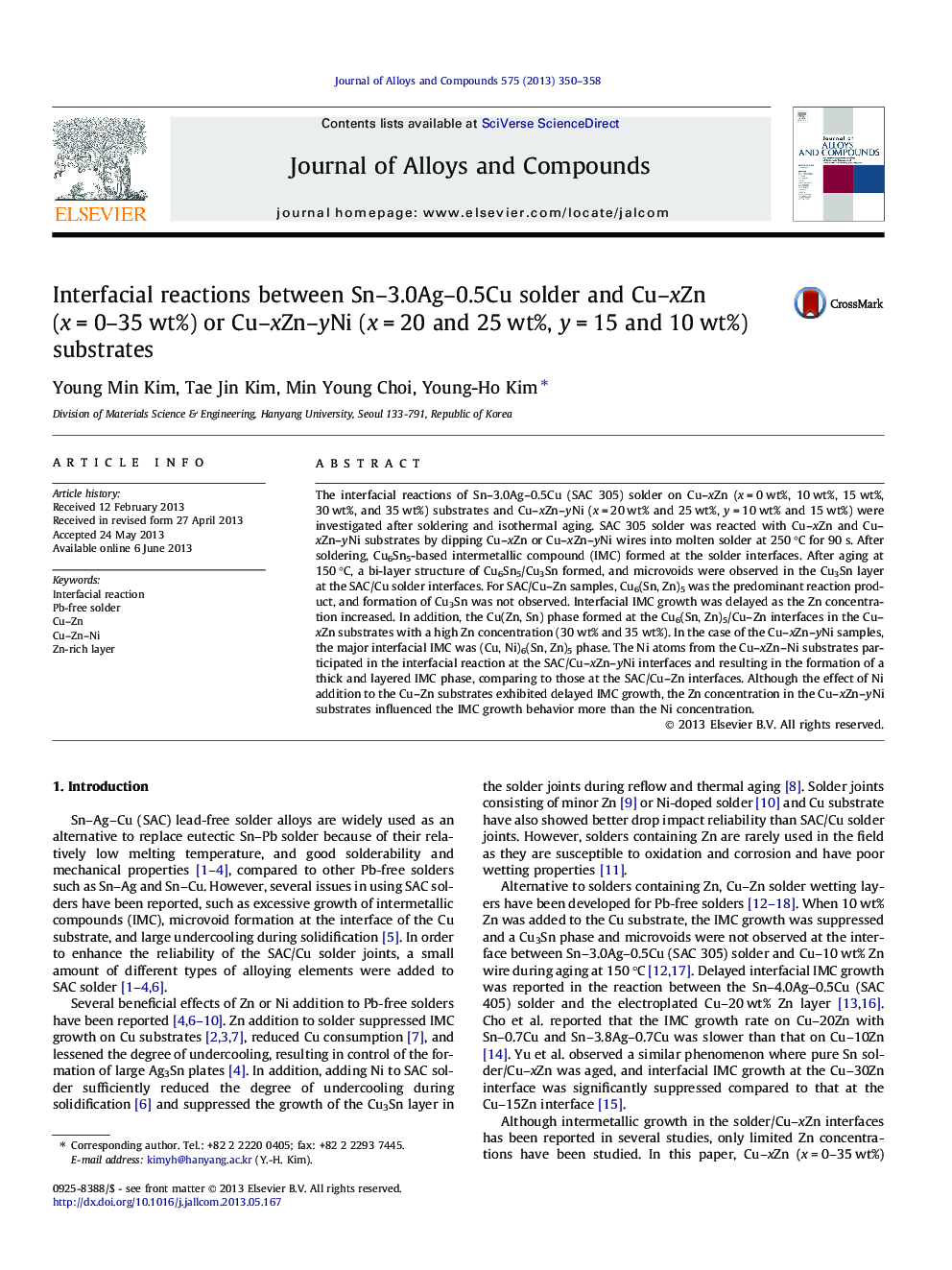| Article ID | Journal | Published Year | Pages | File Type |
|---|---|---|---|---|
| 1613507 | Journal of Alloys and Compounds | 2013 | 9 Pages |
•IMC growth at the SAC/Cu–xZn solder interfaces strongly depends on the Zn concentration.•IMC morphology changed from scallop to layered type at the SAC/Cu–xZn–yNi interface.•Neither Cu3Sn nor microvoids was formed on both Cu–xZn and Cu–xZn–yNi substrates.•Zn-rich layer at the IMC/Cu–xZn or IMC/Cu–xZn–yNi was effective in suppressing the IMC growth.•IMC growth behavior is controlled by the Zn rather than Ni content in the Cu–xZn–yNi substrates.
The interfacial reactions of Sn–3.0Ag–0.5Cu (SAC 305) solder on Cu–xZn (x = 0 wt%, 10 wt%, 15 wt%, 30 wt%, and 35 wt%) substrates and Cu–xZn–yNi (x = 20 wt% and 25 wt%, y = 10 wt% and 15 wt%) were investigated after soldering and isothermal aging. SAC 305 solder was reacted with Cu–xZn and Cu–xZn–yNi substrates by dipping Cu–xZn or Cu–xZn–yNi wires into molten solder at 250 °C for 90 s. After soldering, Cu6Sn5-based intermetallic compound (IMC) formed at the solder interfaces. After aging at 150 °C, a bi-layer structure of Cu6Sn5/Cu3Sn formed, and microvoids were observed in the Cu3Sn layer at the SAC/Cu solder interfaces. For SAC/Cu–Zn samples, Cu6(Sn, Zn)5 was the predominant reaction product, and formation of Cu3Sn was not observed. Interfacial IMC growth was delayed as the Zn concentration increased. In addition, the Cu(Zn, Sn) phase formed at the Cu6(Sn, Zn)5/Cu–Zn interfaces in the Cu–xZn substrates with a high Zn concentration (30 wt% and 35 wt%). In the case of the Cu–xZn–yNi samples, the major interfacial IMC was (Cu, Ni)6(Sn, Zn)5 phase. The Ni atoms from the Cu–xZn–Ni substrates participated in the interfacial reaction at the SAC/Cu–xZn–yNi interfaces and resulting in the formation of a thick and layered IMC phase, comparing to those at the SAC/Cu–Zn interfaces. Although the effect of Ni addition to the Cu–Zn substrates exhibited delayed IMC growth, the Zn concentration in the Cu–xZn–yNi substrates influenced the IMC growth behavior more than the Ni concentration.
